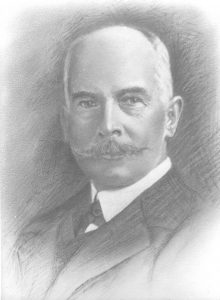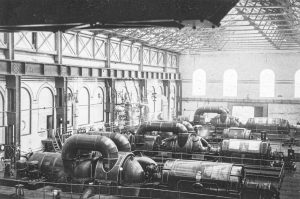Consumable electricity, which is now one of the most important commodities in the world, up there with food and shelter, was unknown in the world less than two hundred years ago. The journey, from Michael Faraday’s discovery that electricity could be made by waving a wire around near to a magnet, to today when electricity is heralded as the saviour of the human race, in our post-fossil fuel age, is near miraculous. Along the way, we have found that our health, warmth, communications and a myriad other human comforts have become dependent on the copious production of electricity. According to the World Energy Outlook 2018, for the first time ever the total number of people without access to electricity fell below one billion. With more than 120 million gaining access in 2017 alone, that means that there are now nearly seven billion people in the world dependent to some extent on electricity.
What is Brighton?
Brighton was a small fishing township in Sussex, England, on the South coast. It came to prominence when the Prince Regent’s physicians advised him to take the medical benefits of a holiday in Brighton. ‘Prinnie’ became King George IV in 1820 and his summer palace (The Pavillion) at Brighton was completed in 1823. Although the King made only two further visits to Brighton after the palace was finished, the town became the place for rich Londoners to be seen in. With the arrival of the railway in 1841, the town’s popularity as a holiday destination grew even more and several hotels, two piers and many other attractions were built.
Electricity’s early years.
It was 1870, and Grammes’s production of a practical dynamo, that allowed the industrial production of electricity to begin. In 1875 the Gare du Nord in Paris is believed to be the first public building in the world to be lit by the Electric Light. This was a great success and by 1878 there were many hundreds of lamps lighting buildings and thoroughfares in Paris.
In 1881 the Town of Godalming in Surrey, England, upset by the rising cost of gas street lighting, decided to scrap their reliance on the Gas Company and asked Messrs Siemens Bros & Co. to provide a generator and install an electrically operated system of street lighting. What stands out from many similar stories in several countries around the world is that, for the first time, Siemens advertised that any local consumer could be connected to the generator, for a fee, and enjoy the benefits of an electrical installation. And so was born the first public supply of electricity. Sadly, this innovative approach did not last. Problems with the supply led to the Town Council rescinding the electrical contract and reinstating the Gas installation.
So why “Electricity in Brighton”?
In December 1881, Robert Hammond came to Brighton with the intent of showing off his Brush Electric Arc Lighting system. Robert Hammond had already built a reputation of being knowledgeable about electrical matters and one can presume that his demonstration in Brighton was something of a triumph. Indeed, it so impressed local businessmen and Town Councillors that Hammond was prevailed upon to install a short electrical circuit in order to allow time for the system to be evaluated.
A small shed was made available, in the corner of a metal foundry in the town, to house the generator, and a circuit of 1 ¾ miles and twelve arc-lamps was set up. Magnus Volk (of Volk’s Railway fame) was installed as ‘Engineer’ and a young man, Mr Arthur Wright, was put in charge of the arc-lighting display. The lamps were switched on, on the 21st January 1882 and ran for one week, at the end of which time so great was the demand that Robert Hammond felt encouraged to set up a new business in the Town to be called the Hammond Electric Light Company. It is comforting to believe that their first customer might have been Reed’s ‘Regent Iron Foundry’, in whose shed the generator was installed, although their name is not present in the ‘List of Consumers’ of 1885.
The new venture began trading on 27th February 1882 and thus began the world’s first continuously operating public supply of electricity. Brighton’s businesses and residents have had access to electricity in an unbroken line since that date.
The site of the world’s first power station, for the supply of electricity to the public, was in a corner of Reed’s Iron Foundry in Gloucester Road. Although we can’t pinpoint the location of this shed exactly, it seems likely that it was located at the back of the works adjacent to North Road.
Robert Hammond lost interest in the Brighton concern at some time during 1882 and handed over control to a young engineer named Arthur Wright. Hammond’s primary interest was in selling installations and he built a successful business doing just that in several other towns along the South coast.
By the spring of 1883, all sixteen arc-lamps, that the Brush Dynamo could supply, were contracted for and the decision was taken to increase the supply by the addition of another generating set, capable of running a further forty arc-lamps.
During 1885, Hammond finally severed all ties with Brighton, allowing his Company to go into voluntary liquidation and the business interests to pass into the hands of the newly-formed Brighton Electric Light Company.
The new Company started business in a building alongside the old shed. This new power station was tiny by modern standards, being just 17M X 21M, but enclosed within were three dynamos capable of running 120 lamps. In January 1886 the Company was supplying electricity to not only arc-lamps but also 1000 incandescent lamps, over 8 miles of circuits – despite the inconvenience of not being able to turn off individual incandescent lamps (the dynamos were operated between dusk and 11:00pm). By the close of that year, the Company had 5 Brush Dynamos and supplied 34 arc-lamps and over 1,500 incandescent lamps over 15 miles of circuits, stretching out 3 miles from the Power Station.
At the beginning of 1887, electricity was supplied between the hours of dusk and 11:00pm but during that year a semi-portable Hornsby engine, driving a 16 light dynamo was installed to take the day load.
In 1888 the Company changed its name to the Brighton & Hove Electric Light Company and also changed the generating system to the new Alternating Current system. Customers now had a transformer fitted to their outside walls wherein the voltage could be reduced from 1800V to 100V.
All of the Company’s customers were supplied by overhead cables since the Company did not have the statutory authority to lay cables in the street and Brighton Corporation refused to give up their authority to do so, despite being repeatedly being requested so to do. Eventually, the Company approached the Board of Trade with a request to grant their own temporary authority. This was refused but Brighton Corporation was advised that their ‘Order of Authority’ would be revoked if they did not use it.
Belatedly, Brighton Corporation decided to build their own power station. They chose a site in North Road, almost opposite Reed’s Foundry in what was seen by many to be a deliberate snub. This station officially opened on 14th September 1891 and ran in direct competition with their opposition on the other side of the street. This rivalry continued until January 1894 when the Corporation agreed to buy out the Brighton & Hove Electric Light Company. Along with the assets and business of the Company, the Corporation also gained the services of Arthur Wright who was quickly put in charge of the Municipal Undertaking.
Generation continued at North Road until 1908 when the Station was shut down and power generation in Brighton came to an end, being transferred to a new Station at Southwick. Total capacity had attained just short of 6,000kW having started 17 years earlier with just 210kW capacity. Electricity had been generated in Brighton for 26 years.
The tale related above is not to imply that this was the first time that electricity had come to Brighton but simply that this was the start of a continuous public supply, up to the present day. For those interested in the detail, the first supply in Brighton was provided in 1881 when a Promenade concert at the Royal Pavillion was lit by electricity from a Siemens dynamo, powered by a Corporation steam roller, arranged and operated by Magnus Volk.
This story is not yet complete. At the museum, we have several photographs of these early days along with a ledger dated 1885, listing all of the company’s customers and addresses and including hand-drawn illustrations of their installations. I hope to include these at some later date. Further, the story continues with the Generating Station at Southwick (subsequently named Brighton ‘A’), its replacement with Brighton ‘B’ and now the little gas-powered station that currently occupies the site.

